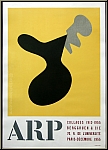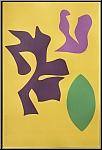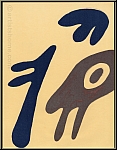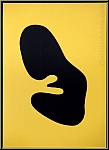Arp, Jean (Hans)
*1886 Straßburg, FRA – †1966 Basel, CHThe German-French artist Hans Arp (Jean Arp) was a painter, sculptor, and poet. He was not only influential on surrealism and Dadaism in the fine arts, but also in literature. After studying in Weimar and Paris, he met eminent artists such as Max Ernst, Pablo Picasso, Paul Klee, and Mondigliani, as well as the artist group 'Der Blaue Reiter' (The Blue Rider). He was later in contact with El Lissitzky and Kurt Schwitters.
Besides sculptures, he was mainly interested in printmaking techniques such as woodcutting. In these abstract works, Arp often addressed the topic of nature. He created organic-poetic arrangements and works of chance: anti-academically, he let simple materials interact with each other and discovered graphical works as a way of translating his austere, powerful compositions of form and colour. Arp’s concern was to create abstract landscapes and figures. To this end, he deliberately created clear, geometrical compositions which he then mixed with random elements. In the style of these chance constellations, Arp made numerous collages consisting of torn paper. For Arp, this method meant that the artistic process was less conscious and therefore closer to life. This technique was new at Arp’s time and gained him enormous attention.
In 1932, Arp joined the group "Abstraction Création". Then he fled from the German occupation to Switzerland via Southern France. Many of his most important works can be seen in the "Arp Museum Rolandseck" in Remagen. With his modern artistic practice, he paved the way for styles such as constructivism, minimal art, and fluxus.









